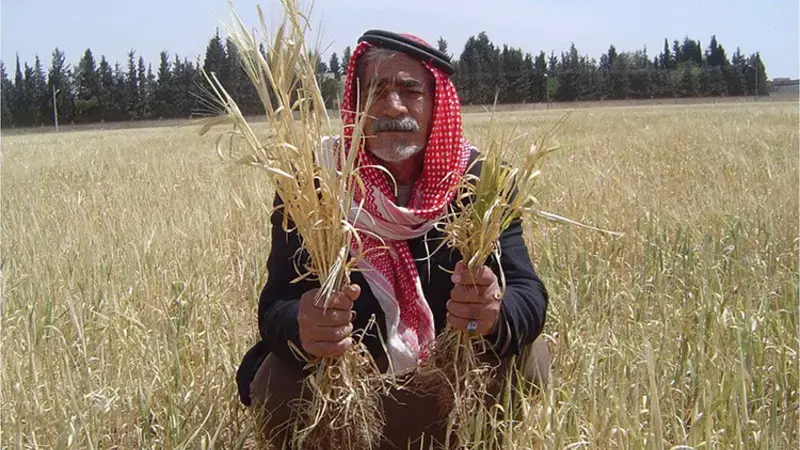A Final Stepping Stone for Smallholders to Zero-Till Farming

Can sowing the seeds without tilling give better results than the age-old practice of ploughing? Wheat farmers from Hama, Syria found out for themselves when they ventured to experiment their wheat crop with zero till (ZT) and were astounded to find the difference in performance, comparing crop under conventional tillage (in left hand) with that under zero tillage (in right hand).
The practice of zero-till prior to sowing has gained traction in developed countries around the world but often meets with skepticism from farmers in developing countries. As a key component of Conservation Agriculture package, it promotes cropping with minimum soil disturbance, stubble retention, and early sowing. This is important for good yields, especially in rainfed and dryland environments. However, with lack of quantified information and evidence on its economic benefits relative to conventional tillage, farmers are not yet convinced to leave their lands unploughed and risk their livelihoods.
A new study conducted by ICARDA scientists along with the wheat farmers in Syria is set to give a major boost to adoption of zero-till practice. The research established adoption of the ZT technology to result in a US$ 189/ha (33%) increase in net crop income and a 26 kg (34%) gain in per capita wheat consumption per year (adult equivalent) – a meaningful change in the livelihoods of smallholder households.
Zero tillage conserves soil moisture and organic matter, while eliminating the need for fuel, labour and machinery costs. In addition, a reduction in wind and water erosion and an increase in soil organic matter and carbon provide significant environmental benefits. With its capacity for moisture conservation and cost savings, zero tillage can lead to higher yields and increased net returns with reduced variability of yield and income, which is particularly important in dryland farming.
In the Western hemisphere, zero tillage is hailed mainly for its fuel cost saving while it may actually lead to some yield losses in high rainfall situations. However, in the arid areas such as West Asia and North Africa where moisture is a major limiting factor, zero tillage has a positive effect on the soil’s moisture retention capacity. Further, the elimination of tillage operations enables farmers to sow early and make better use of rainfall. These changes lead to higher productive efficiency and yields making its economic benefits three-fold – fuel cost savings, higher productive efficiency and higher yields.
The findings build on the prior progress made by scientists with uptake of zero tillage by working with local manufacturers to develop cheaper prototype ZT seeders with modifications to suit local conditions. By 2011-12, the total area under zero tillage had reached 540 Syrian farmers working on 30,000 ha and was fast growing, spurred by circumstances of limited fuel availability. The ACIAR-funded project had as well successfully introduced zero tillage in northern Iraq, where it was adopted by 100 farmers on an estimated area of 14,050 ha in 2014-15, with benefits comparable to those in Syria.
Supported by: Australian Centre for International Agricultural Research (ACIAR)
